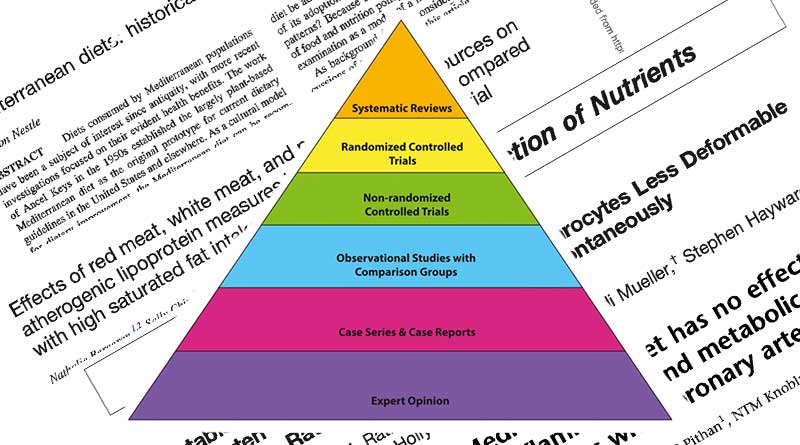The hierarchy of evidence

Introduction
Many thanks to Mike for suggesting this note. Mike wanted to understand more about the types of studies that are used in the Monday notes. He specifically mentioned “Intervention/Observation Trials, META studies, Random Control trials (blind or otherwise etc) Association studies, Cross over studies etc.” He explained that he knew more about association studies but that he wanted to “understand the hierarchy of experiments – their pros and cons etc.”
What a good suggestion. This note doesn’t lend itself to an Executive Summary, unfortunately, but it will serve as a glossary, to refer back to, any time we cover different types of studies.
Levels of evidence
A search for “Evidence pyramid” generates many different diagrams. There are some variations, but all place systematic review (and meta-analysis) at the top. Randomised controlled trials come above observational studies. Observational studies come above case reports. The bottom layer in many pyramids is “expert opinion”. In other pyramids, the bottom layer is “animal studies.” Some pyramids place review articles below systematic reviews. Personally, I think that any review should be systematic and thus “systematic reviews” should cover any valid reviews. The diagram below is from a 2013 paper and it’s typical of the general hierarchy and so it’s a good place to start (Ref 1).
The rest of this article is available to site subscribers, who get access to all articles plus a weekly newsletter.
To continue reading, please login below or sign up for a subscription. Thank you.




